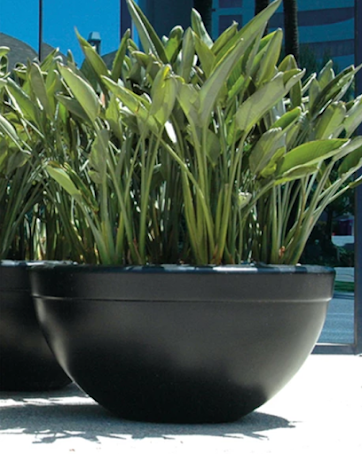How Good are Concrete Planters for Growing Plants
Visualize a driveway lined with colorful flowers and shrubs in large concrete planters of various shapes, designs, and colors. Seems warm and welcoming; isn’t it?
Now imagine a small container garden with commercial planters holding beautiful pieces of nature in limited spaces.
Concrete Planters
So, concrete planters sound like the ideal solution to bring home the colors and beauty of nature, regardless of the size of your outdoor space.
Well, although concrete planters add character and design to a house, people continue to question whether this beauty is equally functional in holding precious pieces of nature. Do plants grow and thrive in concrete planters. Is the material favorable for plant growth like terracotta and ceramic?
If your mind is also clouded by the above questions, read on to find out the multiple benefits of concrete planters before adding them to your outdoor space to bring home ambience and beauty.
Benefits of Large Concrete Planters
- The biggest plus point of cement pots is that they are significantly durable when compared to terracotta and ceramic. They do not get damaged, until they fall heavily or are left out in freezing temperatures. So, they last and last for a long period of time.
- Cement pots are porous in nature. The moisture seeps out easily, thereby eliminating the risk of overwatering the plants. However, plants potted in these planters must be watered more frequently to ensure keeping them moist.
- Concrete pots have a unique characteristic of trapping heat in it. The soil it contains is therefore, warmer than the soil in any other pot. This makes cement pots more favorable for warm-season plants that grow better in warmer temperatures. Moreover, such plants thrive in cement pots even if the temperature outside is not as warm.
- A drawback of container gardening is to bear with adverse weather conditions. A strong wind can topple over the cement planter on the ledge. Cement pots are heavy, and are safe even during a windy weather. They do not fall, thanks to their weight and sturdiness.
- One drawback of cement is that it releases lime into the soil. This is a setback that discourages many people from buying concrete pots for plants. Lime makes the soil more alkaline, which is not suitable for plants to grow. Lime stunts their growth and kills plants that do not prefer alkaline soil. However, using cement pots without lime is a perfect alternate that encompasses the goodness of concrete planters without the ill-effects of lime.
So, cement without lime is safe for growing vegetables. Regular concrete planters with lime are great for succulents and other plants that grow well in soil that is alkaline in nature. Moreover, sealing the concrete planters not only limits the lime from seeping into the soil but also adds years to its life by making it sturdier and stronger.
So, concrete planters are a great addition to your outdoor space. In fact, Outdoor Fire and Patio has a variety of concrete planters that can be matched to the home’s architecture to grow beautiful plants while decorating the outdoor space without spending too much on décor and fanciful items.
For further details, contact them at www.outdoorfireandpatio.com




Comments
Post a Comment